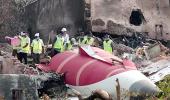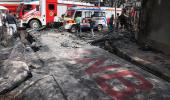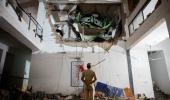'The goal is a 360-degree reconstruction of the flight's final minutes to ensure nothing is overlooked.'

The role of black boxes goes far beyond just playing back the last few minutes of an aircraft that has crashed. They are also essential to determining accountability -- was it a misjudgment by the pilot? A catastrophic systems failure? Or something flawed in the aircraft's very design?
Group Captain Rajiv Kumar Narang (retd) describes to Prasanna D Zore/Rediff how India's Aircraft Accident Investigation Bureau (AAIB) investigates crashes using data not only from CVRs and FDRs but also from other vital sources like radar, ATC logs, and weather data.
He explains how expert investigators piece together information to distinguish between human and mechanical causes -- and why that distinction matters so much for aviation safety reforms.
Can CVR or FDR data show if the crash was due to pilot confusion or technical malfunction?
Yes. For instance, if power drops without pilot input, that suggests a mechanical failure. If altitude or heading deviates sharply, it may point to either pilot confusion or faulty instruments.
Experts analyse these patterns holistically to identify causes.
What is the standard operating procedure followed by India's AAIB after a crash?
AAIB follows a structured, multi-stage process. Domain experts first secure and retrieve the black boxes. Then comes data extraction, cross-verification with wreckage analysis, and sometimes forensic or lab testing.
The process is thorough and collaborative across disciplines.
Apart from CVR and FDR, what other data sources are used?
Investigators use radar tracks, ATC (air traffic control) audio, aircraft maintenance logs, previous pilot reports, and even weather data.
The goal is a 360-degree reconstruction of the flight's final minutes to ensure nothing is overlooked.
How do these tools help distinguish between human, mechanical, or design faults?
The CVR offers clues into pilot intent and reactions, while the FDR provides technical snapshots.
Combined, they help triangulate whether a crash stemmed from human error, a sudden failure, or a systemic design issue -- ensuring the right corrective steps are taken.









